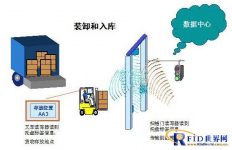
Skyscraper RF RFID warehousing and logistics management solutions
[ad_1]
1. Warehousing and logistics management
Logistics refers to the effective flow of raw materials, finished products, and related information from starting point to ending point.based onRFIDThe warehouse management system introduces RFID technology into the existing warehouse management, and automatically collects the data of each operation link such as warehouse arrival inspection, warehousing, outgoing, allocation, shifting, inventory counting, etc., to ensure the warehouse Manage the speed and accuracy of data input in each link to ensure that the company has a timely and accurate grasp of the true data of the inventory, and reasonably maintains and controls the company’s inventory. Through scientific coding, it is also convenient to manage the batch and shelf life of items. Using the system’s location management function, you can also grasp the current location of all inventory materials in a timely manner, which is conducive to improving the efficiency of warehouse management.

Second, the management object
The main body of warehouse management is the warehouse administrator, and its management objects include:
(1) Inventory:
Items stored in the warehouse are the fundamental object of warehouse management; limited to the current system is not suitable for managing every small single item, so the unit that uses RFID to manage items is the entire category of items (including large single items ).
(2) Location:
The areas in the warehouse that are used to store inventory items that do not overlap each other in space. Generally, one storage location can store multiple inventory items; it can also occupy several storage locations for a larger inventory item.
(3) Warehouse management equipment:
Equipment used for warehouse management, such as forklifts, trolleys, etc.; in large, busy warehouses
It is necessary to carry out reasonable scheduling and real-time positioning of these devices to improve the utilization rate of the devices.
3. Scheme design
1. Item storage
After purchasing, after confirming the shopping list with the merchant, the list is sent to the library management, and the library management can make full use of the time to write the label in advance according to the list. At this time, the label status is not in storage. When the item arrives at the door of the warehouse, the warehouse manager takes the written label and scans it with a handheld machine, finds the corresponding item, attaches the label, and automatically uploads the information to the management software. After all items are confirmed to be correct, put it on the shelf and complete the entry. Library program, and the label status in the management software is changed to storage.
2. Collect items
The employee goes to the warehouse and finds the library manager to read the employee card. The management software records the card reading time and displays the number of items that the employee has received, whether he has the authority to claim it again. The library manager checks the inventory status and location of the item in the management software. After the warehouse manages the required items and scans them with the handheld device, the items are automatically registered in the employee’s information, and the employee takes the items out of the warehouse, and the management software records the time and changes the inventory status to out of the warehouse. To ensure that the outbound items are correct, it also allows the library manager to know the types and quantities of items out of the library in detail, and upload them directly instead of manually counting and registering on the computer as before.
3. Inventory check
The library manager prints the current inventory table, and when the handheld device passes the items in each warehouse area, the item information is automatically scanned, the handheld device displays and automatically uploads to the management software, after scanning, the library manager will check whether the number of items is consistent. While achieving accuracy, it reduces the workload of inventory personnel, shortens inventory time, and improves efficiency.
4. Auxiliary anti-theft
A fixed card reader is installed at the door of the warehouse. When an item is out of the warehouse, if the item’s status information is in the warehouse, the item should not appear outside the warehouse because it may be stolen, and the management software will automatically pop up at this time Alarm information, prompting management personnel. If the item’s status information is out of the library, this information is ignored.
The above behavior management software automatically generates logs, which can be printed out every month and provided with reports for management review.
Four, hardware equipment selection
1 Standard equipment and application software
a: Handheld reader
b: High-power long-distance card reading system
c: Card issuing system
d: label
e: wireless transmission system
f: Monitoring and management software
2Cargo label and personnel label
Five, software function description
1 Monitoring center software
(1) Inquiry of inventory status
(2) Real-time display of personnel and item information in and out of the warehouse
(3) Inquiry of historical warehousing personnel and item information
(4) Report analysis and display
2 Management Center Software
(1) Card status query
(2) Write card information
Note: All cards are written using encryption algorithms to realize the unique identification management function.
[ad_2]



